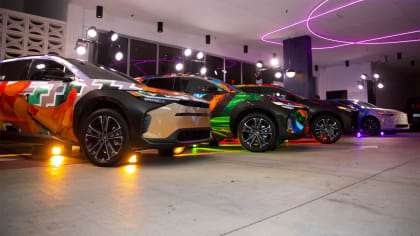The Last SHELBY COBRA My Times With Carroll Shelby
Published on Sun, Feb 2, 2020
By: Don Taylor
Carroll Shelby has been a great boyhood hero to so many of us, including author Chris Theodore. So much of Shelby’s fame comes from the iconic Cobra and his race team’s success with Ford products in the 1960s.
BOOK REVIEW:
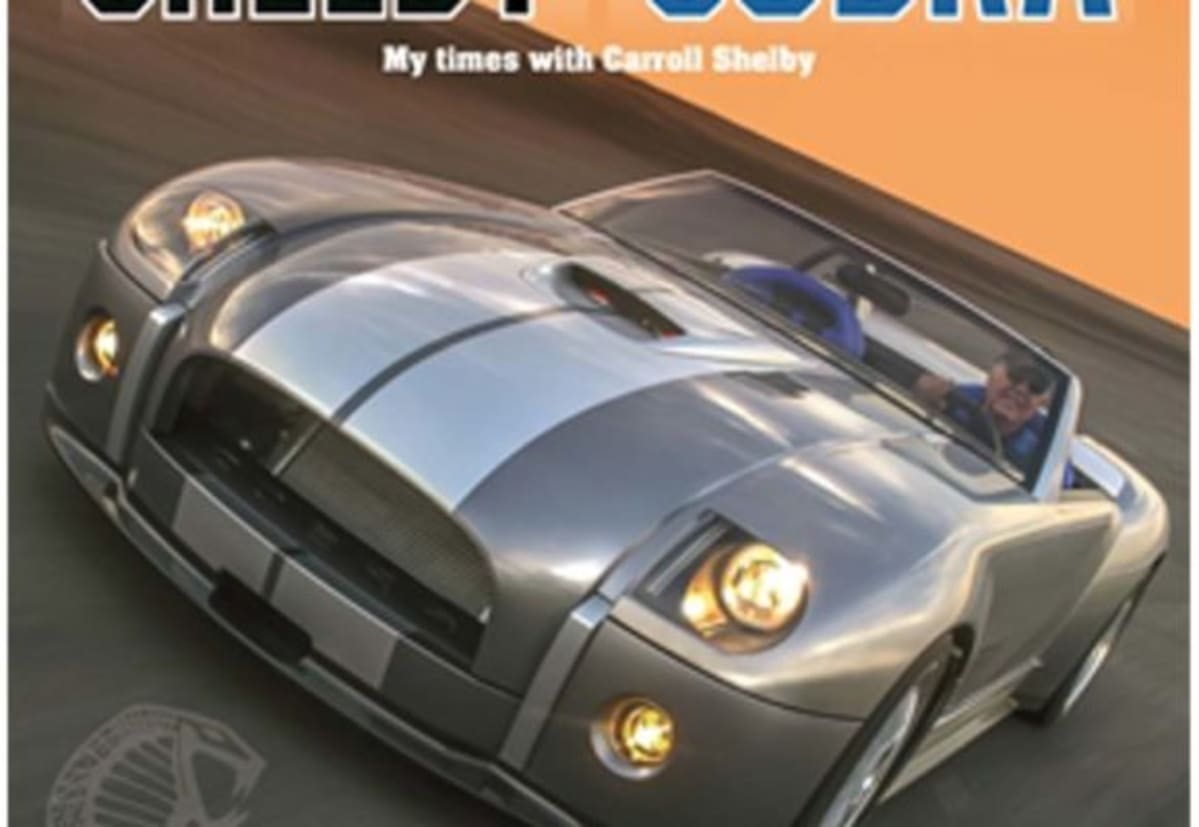
by Chris TheodoreVeloce PublishingHardback,
(Photos courtesy the Publisher and Chris Theodore)
Carroll Shelby has been a great boyhood hero to so many of us, including author Chris Theodore. So much of Shelby’s fame comes from the iconic Cobra and his race team’s success with Ford products in the 1960s.
The new feature movie Ford v Ferrari celebrates the Ford GT’s 1966 Le Mans victory with actor Matt Damon portraying Shelby in his early 40s.
We are also familiar with Shelby’s success as a driver from the years before that, highlighted with him winning Le Mans in 1959 in an Aston Martin. And of course, there was the run of production Shelby Mustang GT350’s and GT500’s.
So much about those glory years has been covered in so many other books. But not in The Last Shelby Cobra. Well, that’s not exactly true; it is included, but just as a quick backgrounder, before Chris Theodore covers Shelby’s intriguing car projects from more recent years.
Specifically what we have in this unique bit of reporting, are Theodor’s recollections of working with Shelby during the last three decades of Shelby’s life. It is most fitting for Chris to tell the story as he had the good fortune of being in the right place at the right time.
Chris first met Shelby in 1988 when he joined Chrysler as Director of Jeep/Truck Powertrain. It happened one day when Chris was invited into the boardroom to meet Shelby, and show him the plans for a V-10 truck engine that might be suitable for a sports car. Or as Shelby called it, a “sport” car.
As the traditionally struggling, ‘number 3’ Detroit automaker, Chrysler was looking to make a bold statement about “The New Chrysler”, and discussed an all-new, more dramatic, high-performance halo car. At the same time, Shelby was also thinking of how he could create another two-seat sports car along the lines of the original Cobra.
But he realized he needed an OEM partner’s backing. Already having worked together on the Shelby Dodge Omni GLH and Shelby Charger, the two decided to join forces on what became the Viper. Chris’s group was responsible for engine development.
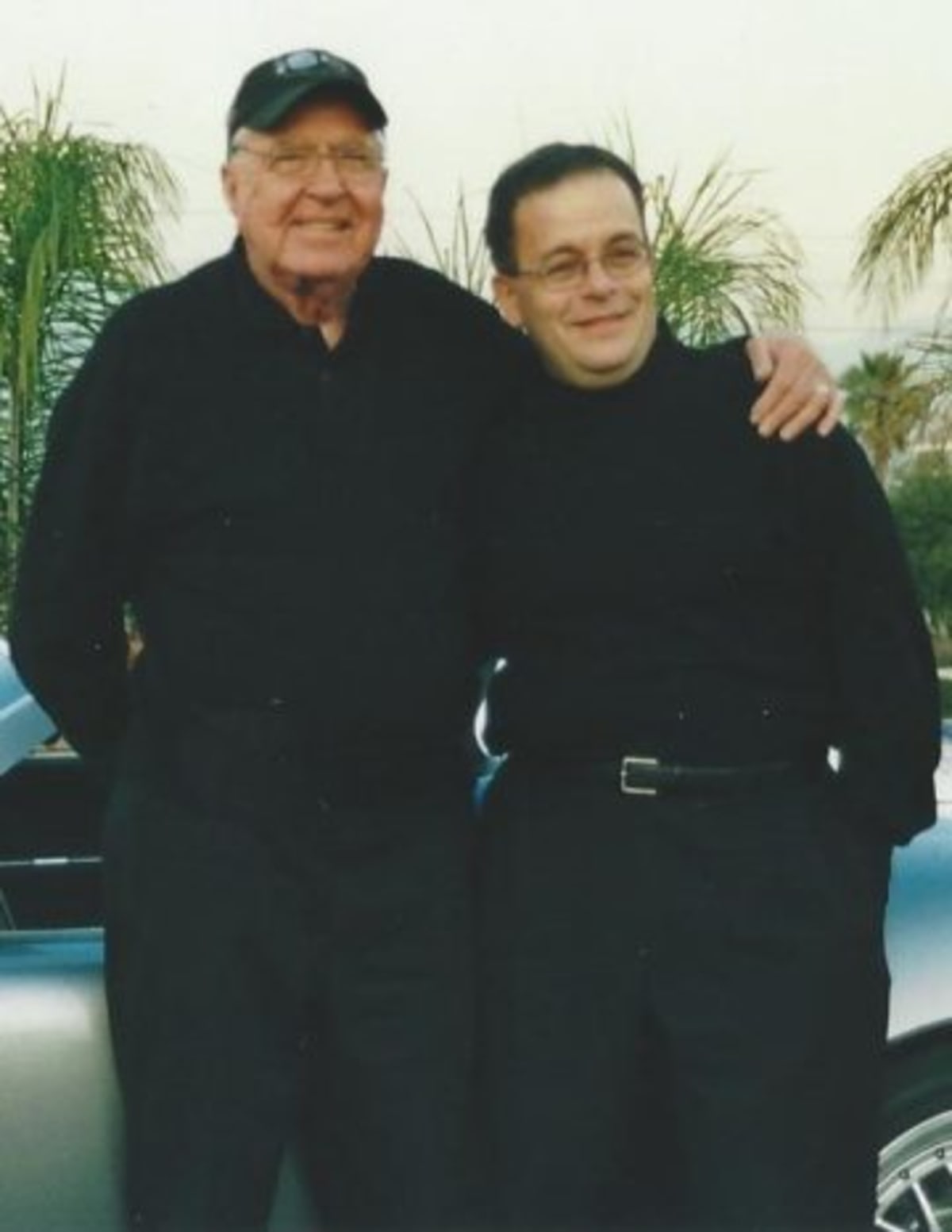
Something had sparked at Chris’s meeting with his hero in 1988, and froprofessional and personal relationship with Carroll Shelby, working together on various car projects all the way until Shelby’s passing in 2012.
Theodore was also in the right place, when he moved from Chrysler to Ford in 1999, after seeing some dark clouds in Chrysler’s “Merger of Equals” relationship with Mercedes. In his new position as Ford’s Vice President of North American Large and Luxury Cars, while reviewing the new generation 2004 Mustang, Chris suggested bringing back a Shelby version.
However, as many know, Shelby and Ford had had a falling out back in the 1980s over ownership of naming rights. And that presented a problem.
It had been thirty-some years since the Ford Shelby Mustang branding was last used. Chris Theodore was the one who jumped in to smooth the waters, and with some enlisted assistance, brought the two back together.m then on Chris built a close
Among the many excellent photos in the book, you’ll see Shelby and Edsel Ford II, having mended fences, smiling away together. And that’s where this book really takes off. It weaves its way through the development of the vehicle in the book’s title while covering many other Shelby projects, stories, and observations made along the way.
The author also gives us a behind-the-curtain look at Shelby’s role in the development of the 2004 Ford GT, Shelby GR1, GTS, and various new-generation Ford Shelby Mustangs.
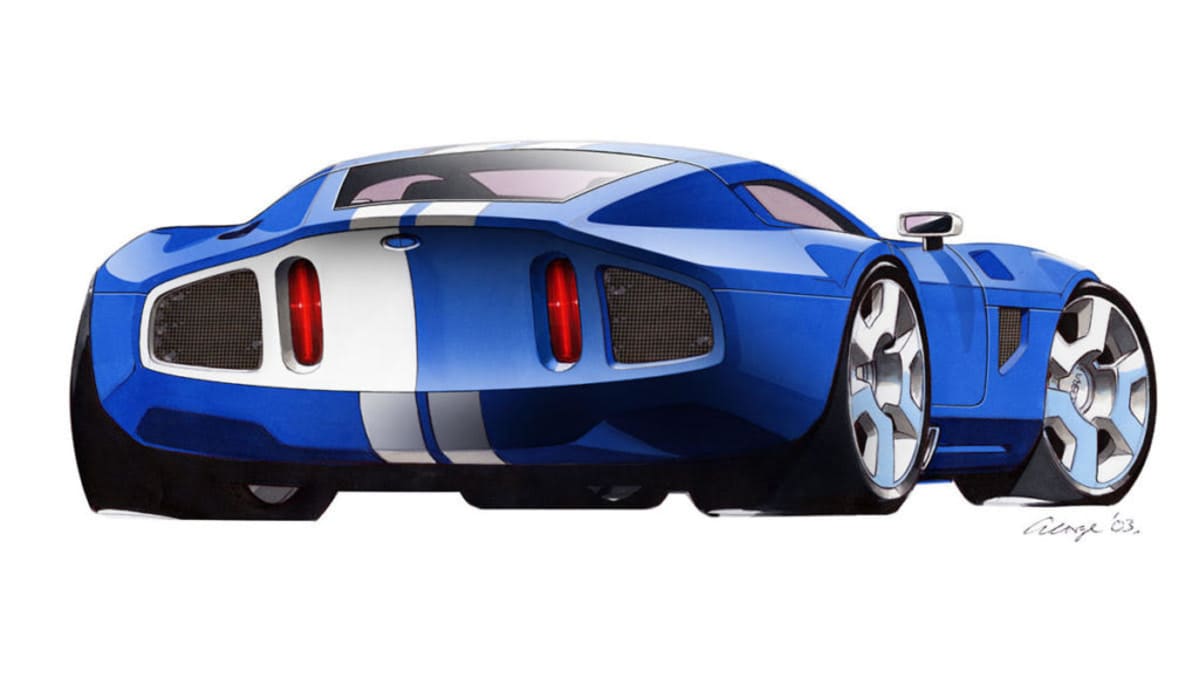
of the Shelby GR-1, the proposed coupe version
of the Daisy project
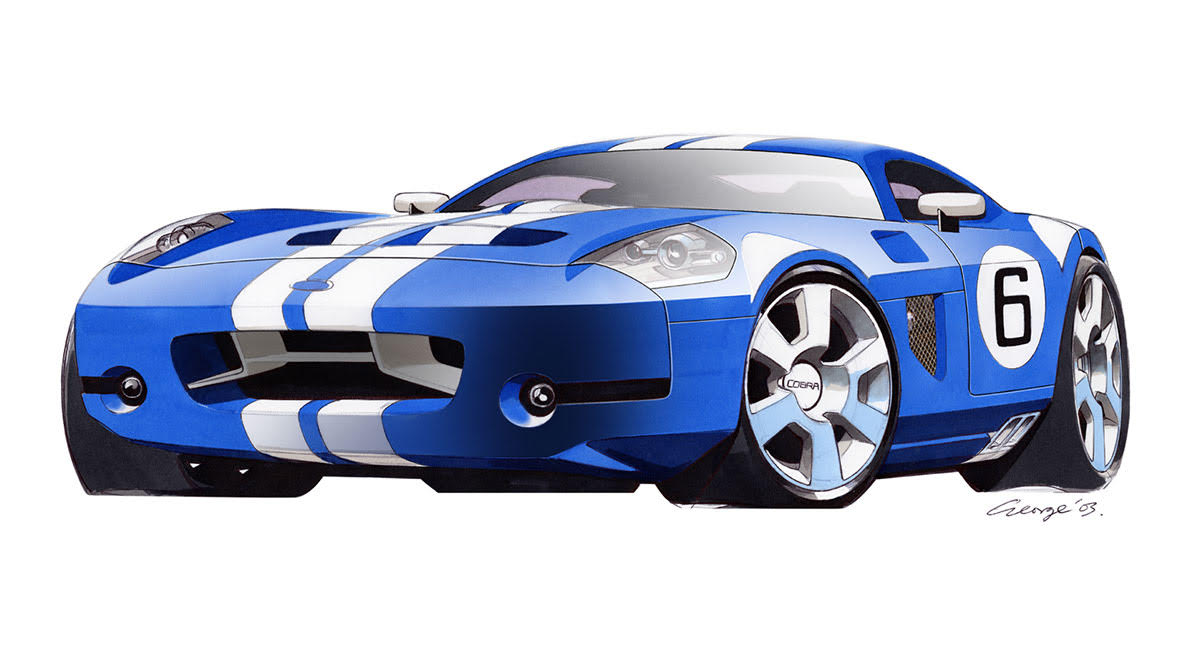
With that introduction, we’ll let you read the book for the rest of the story of Chris working with Ol’ Shel in his AARP years, and details on that “Last Cobra”, which was developed under the curious code name of “Daisy”. Without giving anything away, let’s just say there is a surprise, happy ending.
With his well-rounded automotive background, this expert is able to give the reader insight into the balance of engineering, styling, marketing, and financial trade-offs involved in bringing specialty performance vehicles to market in Detroit.
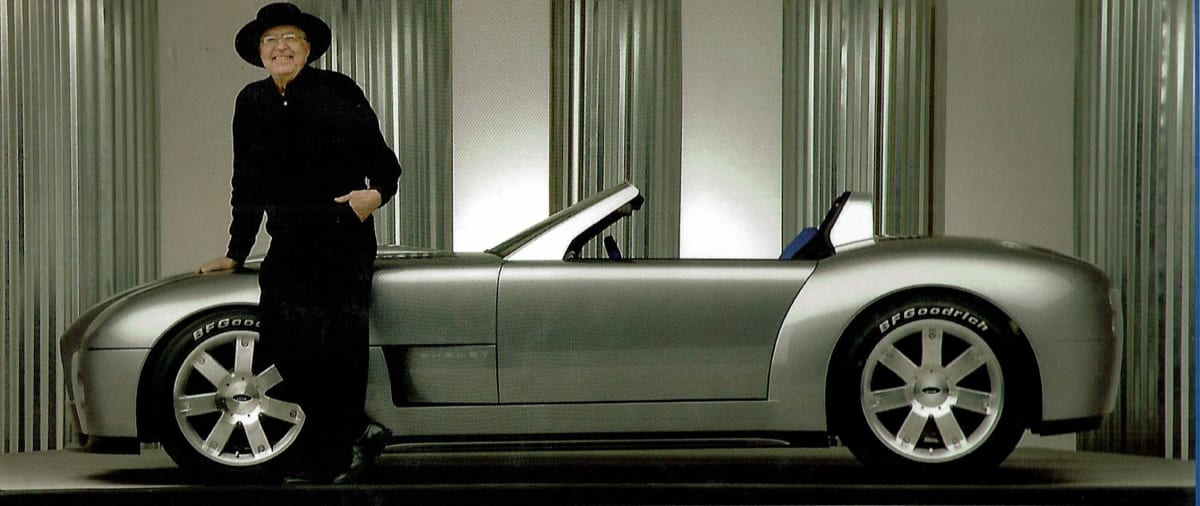
Do I recommend this book? Absolutely. Great photos of styling models and engineering details? Check. An easy to read, insider story on vehicle development? Check. And, most memorably what sticks with me, is a warm personal story of friendship with the legendary Carroll Shelby, in his final years. Double-check.
There’s an especially classy thing that Theodore has done in this one (and I have not seen this done before). In the appendix, he lists all of the names people who were involved in each vehicle project outlined in the book; thus giving proper recognition to every member of every team along with the role each played. A very classy and highly professional touch!
BREAKING NEWS: One more thing … Interested readers should note that this book has been chosen as one of the three finalists for the Motor Press Guild’s, Dean Batchelor, 2019 Book of the Year Award. The winner will be announced on Sunday evening, February 23, 2020, at the Petersen Museum in Los Angeles.
EDITOR’S SIDEBAR By Doug Stokes:
I was lucky enough, as a young lad, to get a ride with Mister Shelby in the first-ever “Shelby Cobra” (even though that car still had an “AC” badge on its nose). It was at a California Sports Car Club race on the parking lot of the LA County Fair Grounds in Pomona.
I had helped set up the course, and one of the perks for the work was a fast “flag car” lap around the circuit with Shelby in a sort of spindly little-known English sports car that he and a couple of his cohorts had shoe-horned a 260 Ford V-8 engine into. I don’t really ever recall hearing the name “Cobra” associated with the car on that day. To me, it seemed to be another cool one-off motor transplant … like the Chevy in Bill Krause’s D-Jag or the nail-head Buick that Max Balchowski dropped into the Morgensen Special, not, Ta-Dah! “THE FIRST EVER”.
As billed, it was a v. fast ride with the guy who had won the 24 Hours of Le Mans only a few years prior and the 2-mile blast (I remember marveling a the fact the parking stripes kept flying under the little light bronze two-seater at a very big angle to our general direction of travel) around the nine-turn road course was all over in way too little time.
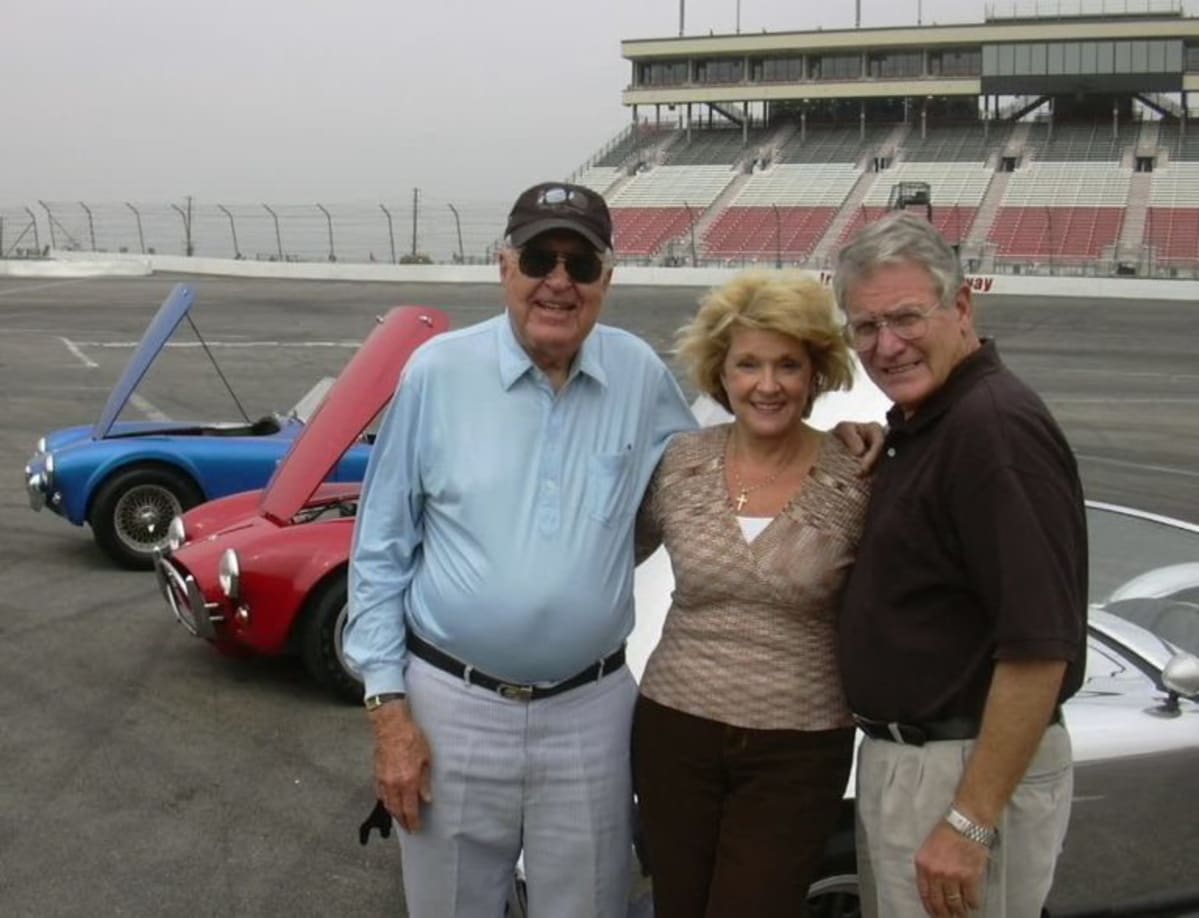
Roll the clock forward a few DECADES and … I’m the PR guy at Irwindale Speedway in 2003 when the Ford people converge on the track and roll out a blunt little sliver over sliver two-seater with a very angry-sounding V-10 engine and start doing laps and taking pictures.
Right, it was the car that this book is all about: “Daisy” and they drill was to get some promo photos and to let Motor Trend Magazine Editor Matt Stone get an exclusive look and a ride in the prototype.
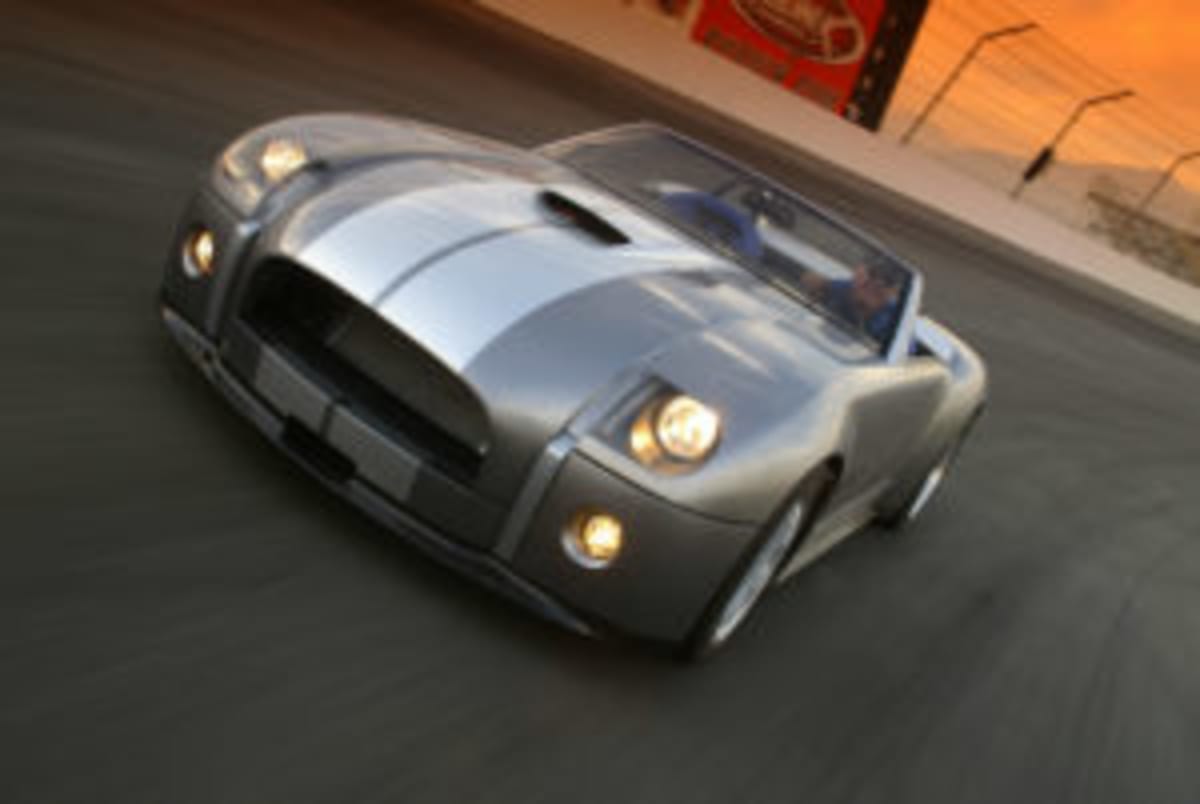
Both Mister Shelby and this book’s author, Chris Theodore were there to put the car through its paces. It was as compact and muscular as it looks in the pictures and, at a distance, barreling around the Irwindale oval, it just had that special “Cobra” look. Up close it was refined, (again) compact, and just clean.
At that point, no one was really talking much about what the car was about (it seemed pretty obvious to me) and the car (I never heard anyone on the Ford on the film crew call it “Daisy”) really didn’t need a name because it was so unique.
I think we all just sort of pointed when we talked about it…
OK, if we can jump cut the clock once more (this time to late 2019), I was quite pleased that Mister Theodore decided to add another (ver personal) layer to the Carroll Shelby saga with this book about the latter days of the Cobra phenomenon and the chief snake charmer himself. As it turns out, for me, it’s one of the best “…What might have been.” books about automobiles in a very long time.
ABOUT THE TITLE SHOT: The long day of filming at Irwindale was just about over and Mister Shelby decided to bake up a few doughnuts before he quit for the day … Needless to say, “Daisy” was a willing and highly adept partner in the exercise.



